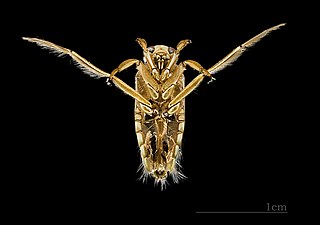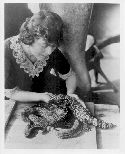
Corixidae is a family of aquatic insects in the order Hemiptera. They are found worldwide in virtually any freshwater habitat and a few species live in saline water. There are about 500 known species worldwide, in 55 genera, including the genus Sigara.

Notonectidae is a cosmopolitan family of aquatic insects in the order Hemiptera, commonly called backswimmers because they swim "upside down" (inverted). They are all predators and typically range from 0.5 to 1.5 cm (0.2–0.6 in) in length. They are similar in appearance to Corixidae, but can be separated by differences in their dorsal-ventral coloration, front legs, and predatory behavior. Their dorsum is convex, lightly colored without cross striations. Their front tarsi are not scoop-shaped and their hind legs are fringed for swimming. There are about 350 species in two subfamilies: Notonectinae with seven genera, and Anisopinae with four genera. Members in the former subfamily are often larger than those in the latter.

Nepomorpha is an infraorder of insects in the "true bug" order (Hemiptera). They belong to the "typical" bugs of the suborder Heteroptera. Due to their aquatic habits, these animals are known as true water bugs. They occur all over the world outside the polar regions, with about 2,000 species altogether. The Nepomorpha can be distinguished from related Heteroptera by their missing or vestigial ocelli. Also, as referred to by the obsolete name Cryptocerata, their antennae are reduced, with weak muscles, and usually carried tucked against the head.

Grace Olive Wiley was an American herpetologist best known for her work with venomous snakes. She died of a snakebite she received while posing for a photographer at the age of 65.

Water treaders, the superfamily Mesovelioidea, are insects in the order Hemiptera, the true bugs. They are semiaquatic insects that live in moist and wet habitat and on wet plant matter in several types of aquatic habitat.

Sigara is a genus of water boatmen in the family Corixidae. Some species within this genus are halophiles; for example, occurrences of the genus have been noted in the hypersaline Makgadikgadi Pans in Botswana.
Corixa affinis is a species of water boatman in the family Corixidae in the order Hemiptera.
Water boatman as a type of aquatic insect can mean:

Notonecta undulata, also known by the common name grousewinged backswimmer, are from the family Notonectidae and the insect suborder Heteroptera. They are a type of hemipteran or true bug. These aquatic insects typically spend their time at the water's surface, using their abdomen and legs to cling to the underside of the surface tension. The Grousewinged backswimmer can be found in both lotic and lentic environments; however, they typically prefer small ponds and lakes where the water is slow-moving with less current. They swim upside down looking for prey. Once they stop swimming they float back up to the surface. These insects can be distinguished from water boatman or Corixidae by their segmented beak and front legs. Water boatman have highly modified front legs whereas backswimmers do not. Backswimmers are distributed across a broad range throughout North America. However, the species Notonecta undulata has only been documented and studied in southern Manitoba, Saskatchewan, Alberta and the western United States. N. undulata differs from other backswimmers by their antennae and size. They are approximately 10–12 mm long, and their antennae are 4 segmented.

Corixinae is a subfamily of aquatic bugs in the family Corixidae. There are at least 130 described species in Corixinae.
Graptocorixa is a genus of water boatmen in the family Corixidae. There are about six described species in Graptocorixa.
Cenocorixa is a genus of water boatmen in the family Corixidae. There are about 12 described species in Cenocorixa.

Corixini is a tribe of water boatmen in the family Corixidae. There are about 9 genera and at least 30 described species in the genus Corixini.

Callicorixa is a genus of water boatmen in the family Corixidae. There are about nine described species in Callicorixa.
Dasycorixa is a genus of water boatmen in the family Corixidae. There are at least three described species in Dasycorixa.

Hesperocorixa is a genus of water boatmen in the family Corixidae. There are more than 20 described species in Hesperocorixa.
Platyvelia is a genus of smaller water striders in the family Veliidae. There are about nine described species in Platyvelia.
Ramphocorixa is a genus of water boatmen in the family Corixidae. There are at least two described species in Ramphocorixa.








